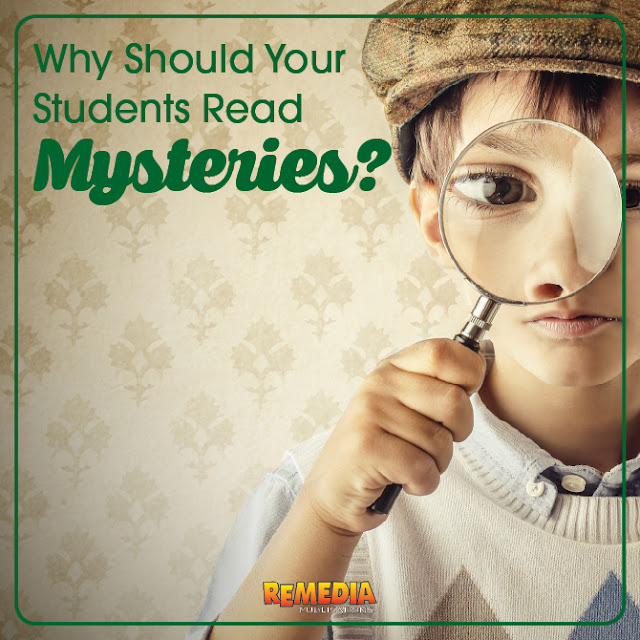PART 1: Why should your students read mysteries?
High-Interest
Mysteries will get and keep your students’ attention! No matter what age, your students will want to solve a good whodunit. Mysteries introduce protagonists like detectives, inspectors, and even pre-teen girls and antagonists from all walks of life. And because an unsolved mystery can take place anywhere, this awesome genre will take your students all over the world.
Mysteries will get and keep your students’ attention! No matter what age, your students will want to solve a good whodunit. Mysteries introduce protagonists like detectives, inspectors, and even pre-teen girls and antagonists from all walks of life. And because an unsolved mystery can take place anywhere, this awesome genre will take your students all over the world.
Critical Thinking & Deductive Reasoning
Making Inferences - Using Logic – Predicting Outcomes
When reading a mystery, students must use facts and reasoning to come to a decision or an opinion. They’ll use logic to analyze the mystery, evaluate possible solutions, and follow sequential steps to arrive at a conclusion. These same steps are required in any problem-solving situation both academic and practical. Students will develop abilities in examining information, exploring possibilities, and sequencing.
Making Inferences - Using Logic – Predicting Outcomes
When reading a mystery, students must use facts and reasoning to come to a decision or an opinion. They’ll use logic to analyze the mystery, evaluate possible solutions, and follow sequential steps to arrive at a conclusion. These same steps are required in any problem-solving situation both academic and practical. Students will develop abilities in examining information, exploring possibilities, and sequencing.
Use our Story Map <free download> to help students come to a logical conclusion when reading.
Supports the Standards
The mystery genre introduces students to multiple text types, new vocabulary, and gives you plenty of content to ask in-depth comprehension questions. You can ask your younger students who, what, where, when, and why questions with a mystery. Or you can delve even deeper to ask students to make a connection between themselves and the story, form an opinion and express a personal point of view, compare two characters, research the location of the mystery, and so much more. Below is a list of just a few of the standards that the mystery genre can cover:
The mystery genre introduces students to multiple text types, new vocabulary, and gives you plenty of content to ask in-depth comprehension questions. You can ask your younger students who, what, where, when, and why questions with a mystery. Or you can delve even deeper to ask students to make a connection between themselves and the story, form an opinion and express a personal point of view, compare two characters, research the location of the mystery, and so much more. Below is a list of just a few of the standards that the mystery genre can cover:
- Make predictions based on evidence from the text
- Identify and describe story elements
- Identify main idea, provide supporting details, key words
- Summarize story elements, cite supporting evidence
- Explain how story elements relate to each other
- Identify and describe character traits, and cite supporting evidence
- Identify and describe similarities and differences
- Identify cause and effect
- Make connections between the story and personal experiences/the real world
- Make inferences based on personal interpretation of the story
- Make judgments and draw conclusions using evidence from the story
- Creative writing
- Develop opinions and express personal point of view
- Distinguish between fact and fiction or true and false using evidence from the story
- Writing questions and developing answers with justification
Stock-Up Your Classroom with High-Interest/Low-Readability Mysteries from Remedia!
{Shop Remedia's Mystery Materials}

